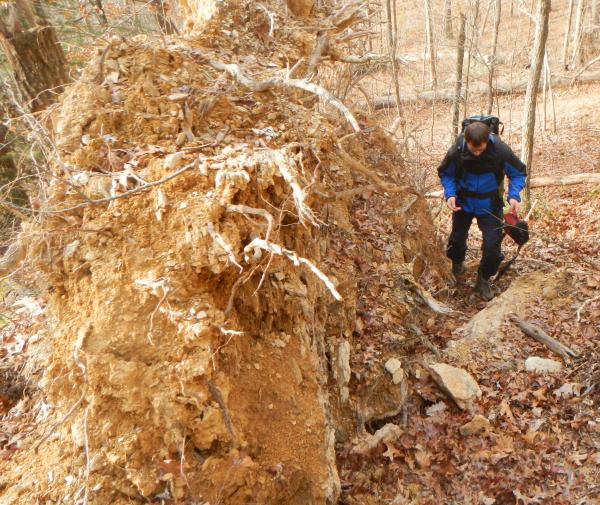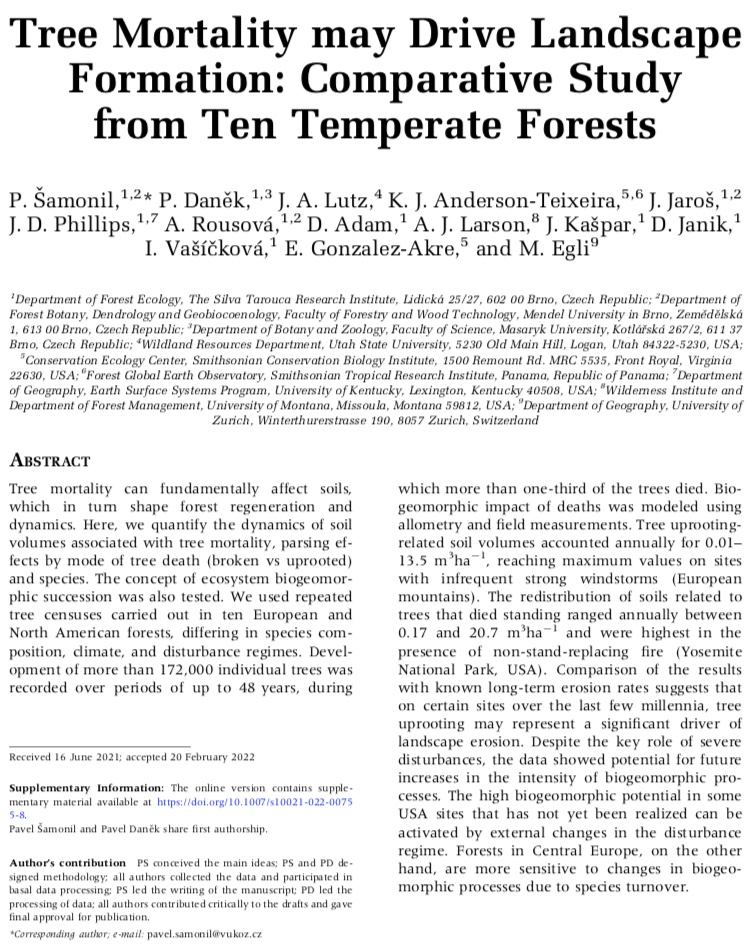DEAD TREES AND LANDSCAPE FORMATION
Just published, in Ecosystems: Tree mortality may drive landscape formation: Comparative study from ten temperate forests. I am but one of 14(!) co-authors on this, but I've been involved in working out effects of trees on soils and landforms for 20 years. This study pulls together data from 10 protected forests and estimates the total volume of material affected by processes such as tree uprooting, and infilling of stump holes and decayed root channels, focusing on the differences between trees that die with their roots in the ground (eventually broken) vs. those that are uprooted. Uprooting-related soil volumes accounted annually for 0.01– 13.5 m3ha-1, reaching maximum values on sites with infrequent strong windstorms (European mountains). The redistribution of soils related to trees that died standing ranged annually between 0.17 and 20.7 m3ha-1 and were highest in the presence of non-stand-replacing fire (Yosemite National Park, USA). Comparing these results with long-term erosion rates indicates that tree effects may be a significant driver of landscape denudation. The full abstract is given below.

Pavel Samonil (lead author of the study) examines at unrooted tree in eastern Kentucky.

